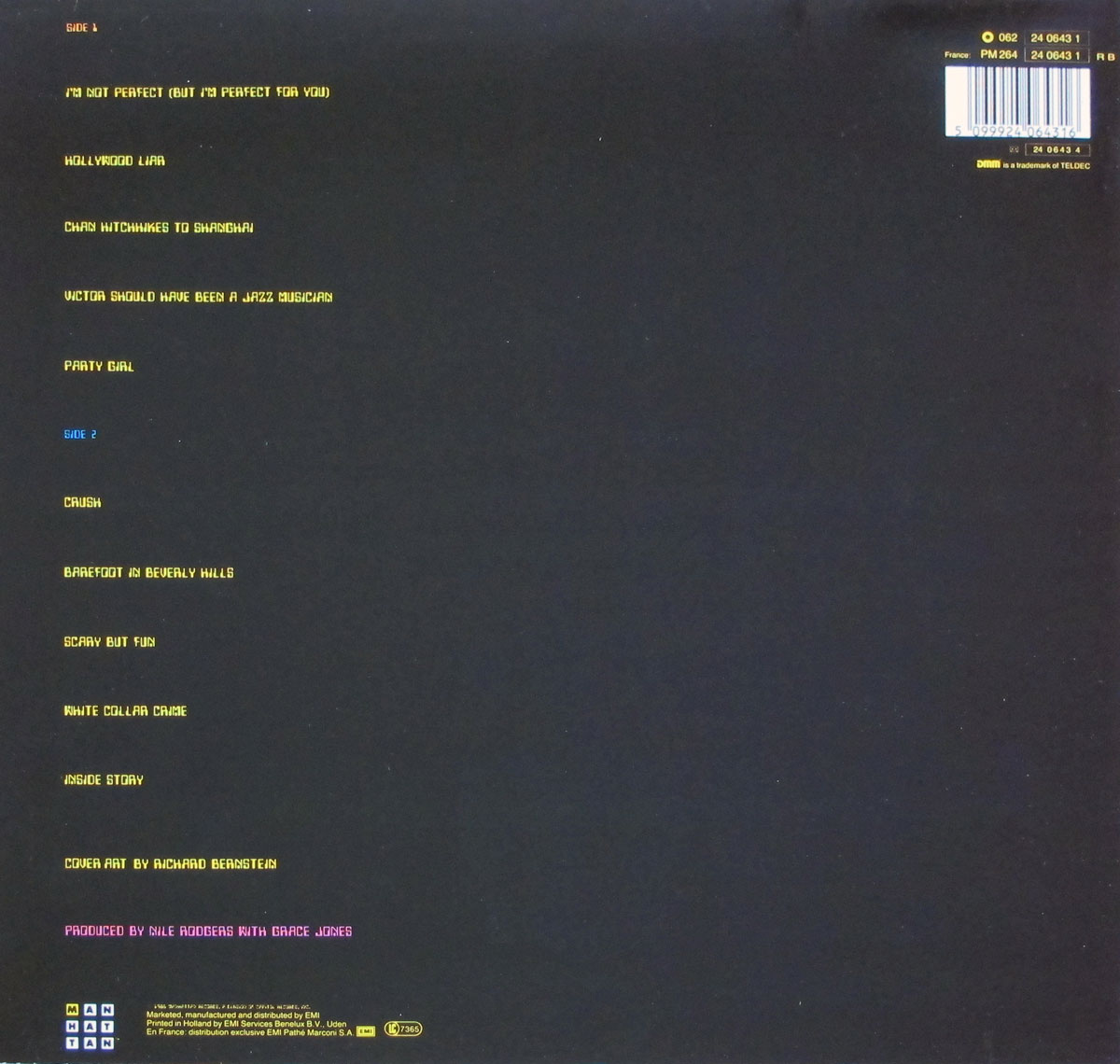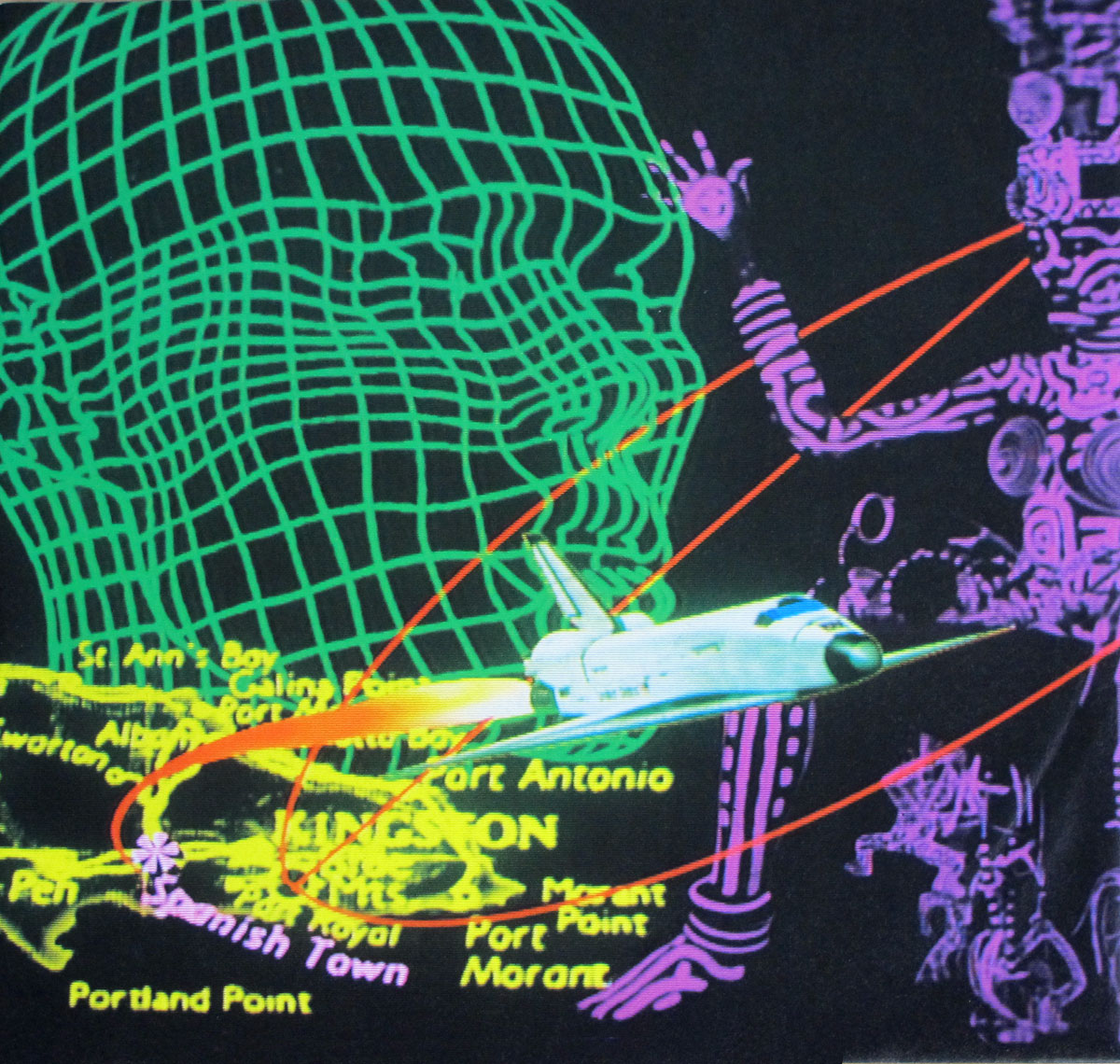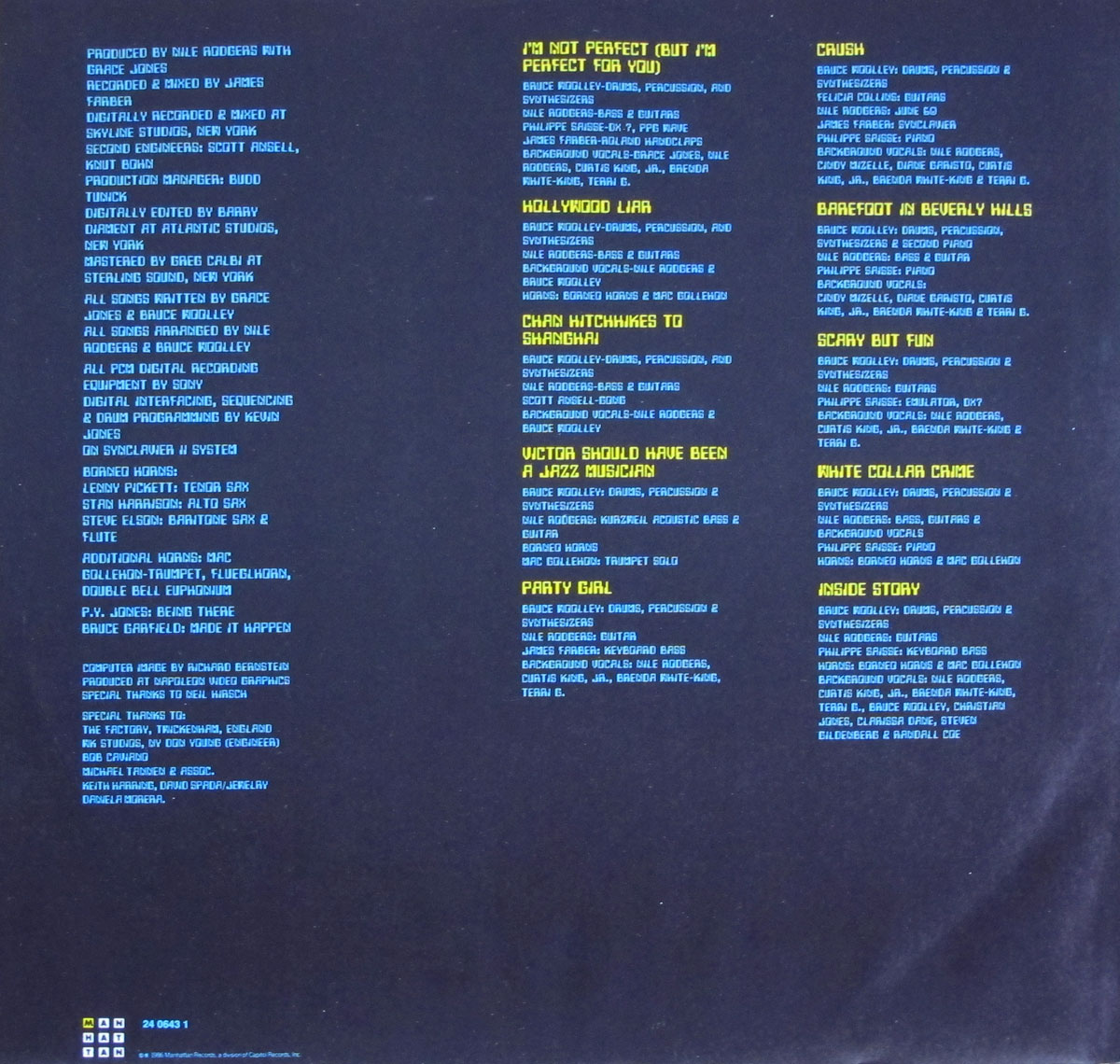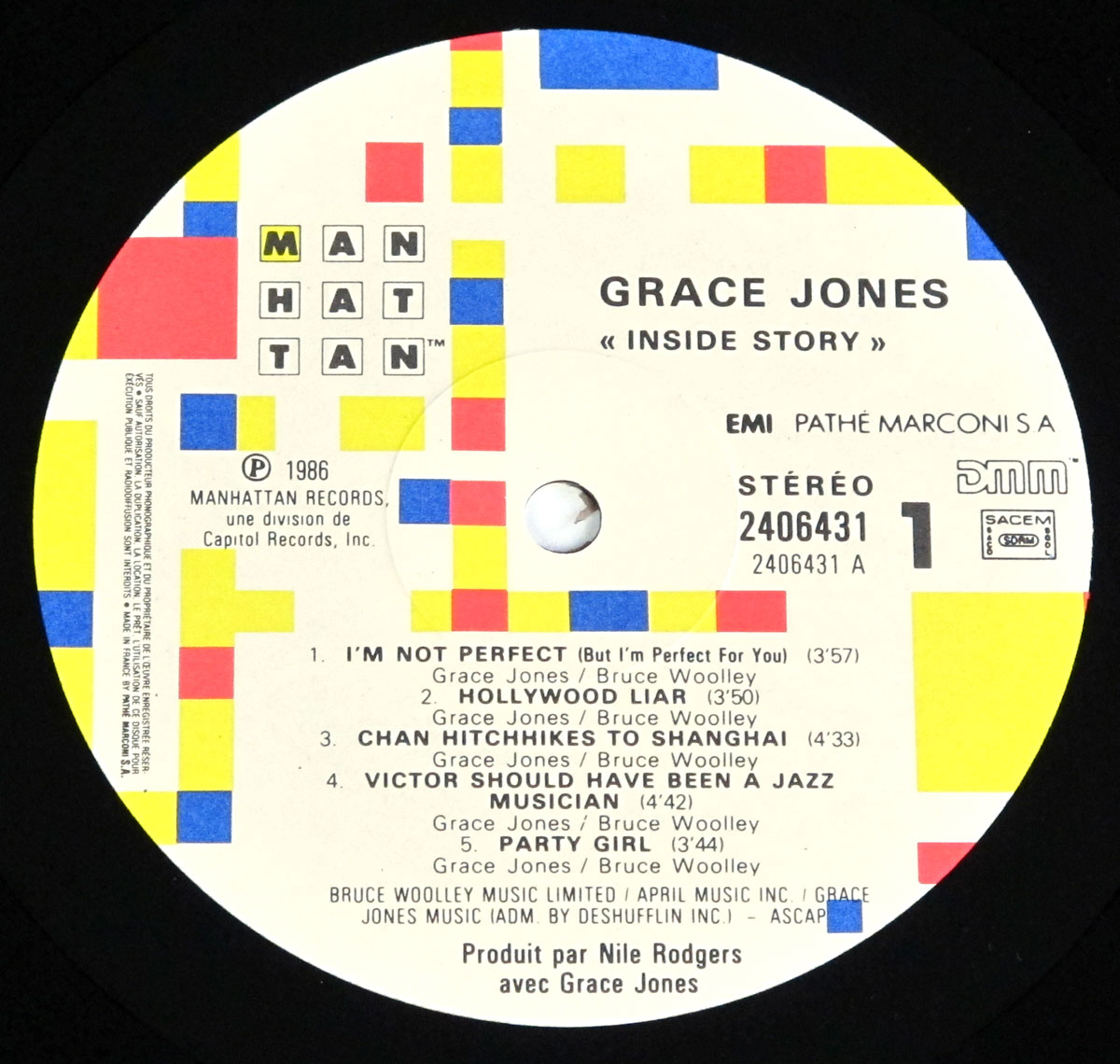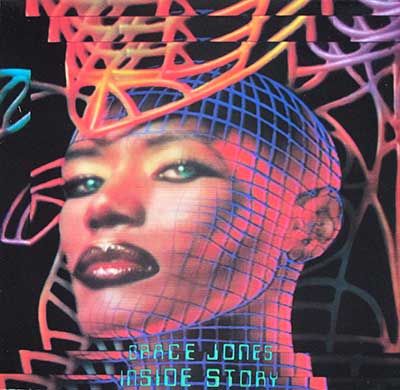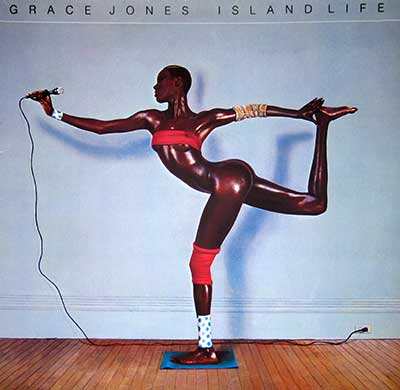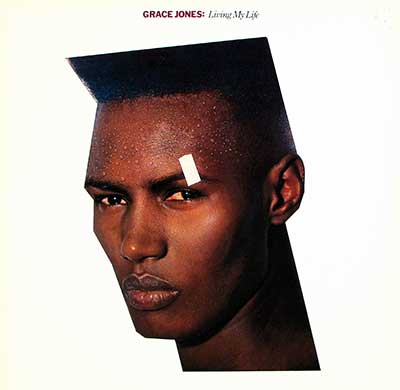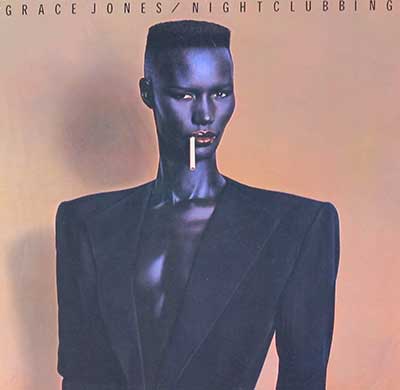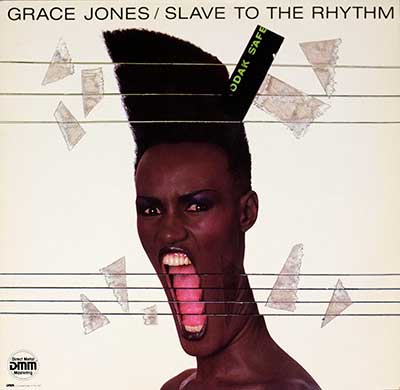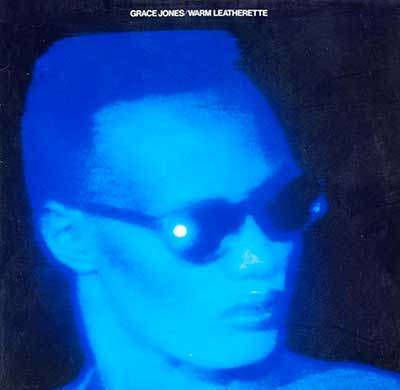Grace Jones: Inside Story Album Description:
Inside Story lands in 1986, the neon hour when drum machines ruled radio, downtown art rubbed shoulders with glossy pop, and the New York club circuit still smelled of spray paint and perfume. Grace Jones steps out of the shadows of avant-disco with a cool stare and a sharper sound, bending pop to her will rather than the other way around.
Historical Context
The mid-eighties asked for precision: digital tape, gated drums, and hooks engineered for FM and MTV. Jones answers with a record that keeps her theatrical bite but speaks the lingua franca of the eraÑtight rhythms, bright keyboards, and lyrics that crane their neck toward the cityÕs high-rise ambitions.
Production as Performance: Nile Rodgers
Nile Rodgers doesnÕt merely produce; he frames the portrait. His signature right-hand guitar flickers in negative space, carving syncopations that let Jones deliver lines with icicle clarity. Rodgers streamlines the architectureÑverse, hook, releaseÑwhile leaving room for JonesÕs sly phrasing and cool danger. Where earlier records courted dubby abstraction, this one walks a catwalk of glass and chrome.
Skyline Studios, New York
Tracked and mixed at Skyline Studios, the album leans into then-modern digital workflowÑrazor-edged edits, lucid reverb tails, and sequenced parts that lock like subway doors. The roomÕs reputation for clean capture and surgical punch is all over the multitracks: bass lines arrive with commuter precision, while programmed percussion snaps like a turnstile.
Greg CalbiÕs Sonic Signature
Mastering engineer Greg Calbi gives the record its final silhouette. The top end is opened just enough for cymbal air and vocal sibilance to shimmer without sting; the low end sits like poured concrete. Stereo imaging is purposefulÑvoices up front, rhythm section centered, guitars and keys placed like light sources in a gallery. The result is a record that sounds loud before you even turn it up.
Musical Exploration
Jones sketches city life in sharp lines: swaggering funk, sleek pop, and sly jazz voicings slip past each other in revolving doors. Horn charts punch through synth glass; sax and flute trace graffiti across the digital grid. The writing toggles between pointed confession and social side-eye, her voice alternating velvet and blade. Even at its glossiest, the album keeps the tension that makes Jones compellingÑbeauty held at armÕs length.
Reception and Friction
Some critics embraced the aerodynamic polish; others missed the vapor-trail mystique of her earlier, more abstract work. That debateÑcommercial sheen versus art-house menaceÑis the albumÕs built-in controversy, a creative tug-of-war that Jones is happy to stage in public. The singles were club-ready, but the deeper cuts kept their teeth.
Influence and After-images
While JonesÕs legacy sprawls across eras, this recordÕs particular alloyÑart-pop attitude fused to precision funkÑleft footprints. Late-eighties and early-nineties acts chasing urbane groove and fashion-literate pop borrowed its geometry: clipped guitars, disciplined rhythm sections, and vocals that pose and pounce. You can hear echoes in sophisti-pop, downtown crossover projects, and the sleek dance records that prized persona as much as pulse.
Why It Endures
Inside Story captures a singular artist using the mainstream as a mirror and a weapon. With Rodgers tightening the lines, Skyline giving the canvas its clean edge, and Calbi etching the final contrast, Jones delivers a record that walks straight into the bright lights and never blinks. It is pop with postureÑarchitectural, glamorous, and unmistakably Grace.

